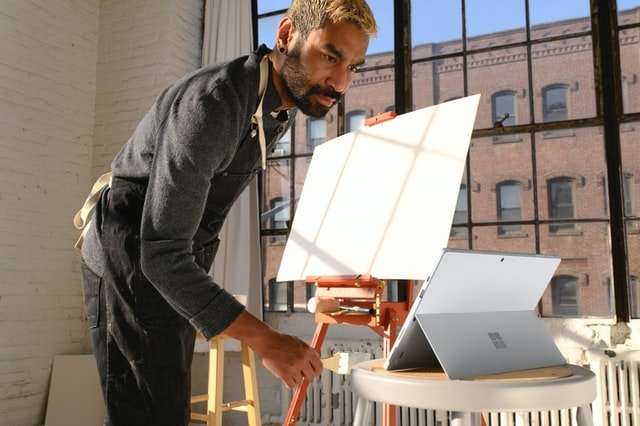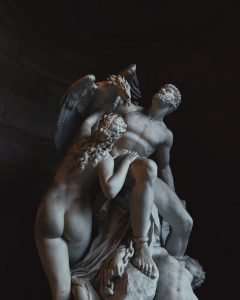This is a blog post that goes over the importance of critique and how to improve your work in the classroom. In a studio art class, critiques are more structured than just giving your opinion. Learn what critique is and why you should be participating. Blog Post by: http://www.artpolicymagazine.com/blog/studio-art/the-importance-of-critique-in-a-studio-art-class//
There is a quote often attributed to the artist, Ansel Adams. I have heard it often, but I cannot find the source. It goes, “There are no mistakes in art, only happy accidents”. This sentiment itself can be argued as nonsense within the context of the art world and studio art in particular.
The idea of critique is as important to practicing artists in a classroom as it is to developing any other kind of craft. The act of making art is an act of discovery, both for the artist and the viewer. When you challenge yourself technically and intellectually with new ideas or styles you are opening yourself up to failure and success.
As an educator I see my job as challenging students to dig deep and experiment. At some point they will inevitably make mistakes and want to give up. But by actively taking part in a community of artists, they will be more apt to stay on a path that takes them beyond their comfort zone into uncharted territory that ultimately leads to a deeper understanding of the practice and the development of their own unique voices.
In studio art classes, critique is important. This is true in most classes, but especially so in studio art. Criticism of artistic work should not be confused with criticism of the artist; it is not personal, it’s an analysis of how the work functions. The goal of critique is to help a student learn how to make better artwork.
Critique can be intimidating for a student. It can also be hard for a teacher to give criticism without coming off as mean or rude. Here are some tips for both students and teachers to make the experience more constructive and less painful:
For students:
1) Don’t take critiques personally
2) Try not to take critiques as suggestions for how your piece could be improved- instead, think about what your instructor is saying about the piece in relation to what you were trying to do.
3) Be prepared for your piece to be discussed critically and know that it’s not personal
4) Be sure that if you aren’t getting critiqued one week, you participate in offering critique to others so that you have an opportunity to practice giving and receiving critique.
5) Ask questions when you don’t understand something- this will help you learn more than just nodding your head while being confused.
For teachers:
In my last blog post I talked about some of the pitfalls and challenges that students can encounter when in a studio art class. The most important thing a student can do is to understand his or her own work. This is hard to do especially if you are a beginner, but it is essential to improving as an artist and making progress in the class.
The first thing a student should do when entering an art class is make their own sketchbook. Sketchbooks are essential for the growth of the artist. They should be a place to try out ideas, do research, figure out ways to accomplish your goals, work through problems and eventually they should be used to consolidate all of your work during the course. A good sketchbook will help you improve your skills and make connections between ideas that relate to one another at different times in your life as an artist.
The best way to improve your sketchbook is by getting feedback from people outside of the classroom environment. This can become really difficult if you are shy or are not sure how to show your work effectively, but this is one of the most important parts of the process. If you need help showing your work I recommend asking someone who you know will give you honest feedback (which means not necessarily someone you know well) or find
The ability to critique one’s own work and the work of others is fundamentally important for all artists, especially at the college level. For some students, this is where the rubber meets the road.
The ability to provide meaningful criticism, both in terms of what to do and what not to do, is a skill that can be developed with practice. It’s very similar to troubleshooting in any technical field; you have a problem in front of you, you analyze it and come up with a solution. This sort of analysis, similar to root cause analysis in engineering or failure mode analysis in manufacturing, is precisely what artists are expected to do when critiquing their own work and that of others.
*Formal critiques are an essential part of studio art classes for two main reasons: 1) it helps the learning process when critiquing your own work by placing the responsibility on yourself rather than a professor/teacher/friend and 2) it forces you to put your thinking into words, which is an essential skill for many professionals. When a professor gives feedback on a project (or even when you give your friends feedback), I find that there are often too many “ums” and “uhs,” making it difficult to discern exactly what they’re trying to say.
I have often heard from students that they feel discouraged or defeated by studio critiques. Most of the time, this discouragement seems to stem from a lack of understanding about what a critique is. I hope this post will help give some insight into the nature of critiques and explain why they are necessary to develop your work.
The first thing to understand about critiques is that they aren’t personal. Yes, you receive individual feedback on your work, but the purpose of this feedback is not to undermine or tear down your work, but to help you improve it. Critiques exist in order to help you learn as an artist and grow as an individual.
Although it’s hard not to take criticism personally, we must remember that our professors and peers are trying to help us develop as artists. They aren’t trying to make us feel bad about ourselves or our artwork; they’re trying to help us improve!
The second thing to keep in mind is that critiques aren’t set in stone. Sometimes there are general trends in a critique that don’t apply to you or your artwork specifically, but are just general things that most people sketch out so that common problems can be pointed out at once. If you feel like your critique wasn’t very useful for you personally, think about how it might
Being able to make art is only one part of the art school experience. It’s just as important to learn how to critique another artist’s work. The ability to articulate what you like and don’t like about a piece of art is something that can be learned. The ability to understand why you like or don’t like something is even more important, though, and that comes with time and practice.
In this blog post I’ll give some tips on critiquing artwork and how your critiques can help the artist in the long run.
So how do you make a good critique? Let’s start with making sure the artist knows what you’re trying to say.
1) When critiquing an artist’s work, try to remember that he or she is likely feeling insecure about their work at that moment. This might be because they’re unsure about it themselves, or it might be because they’re worried about what you think of it. As an artist myself, I’ve found that someone who critiques my work in a helpful way makes me feel much better about my work than someone who doesn’t know what they’re talking about but tells me their opinion anyway. So approach your critiques with this in mind, especially if you’re critiquing someone else’s work in front



